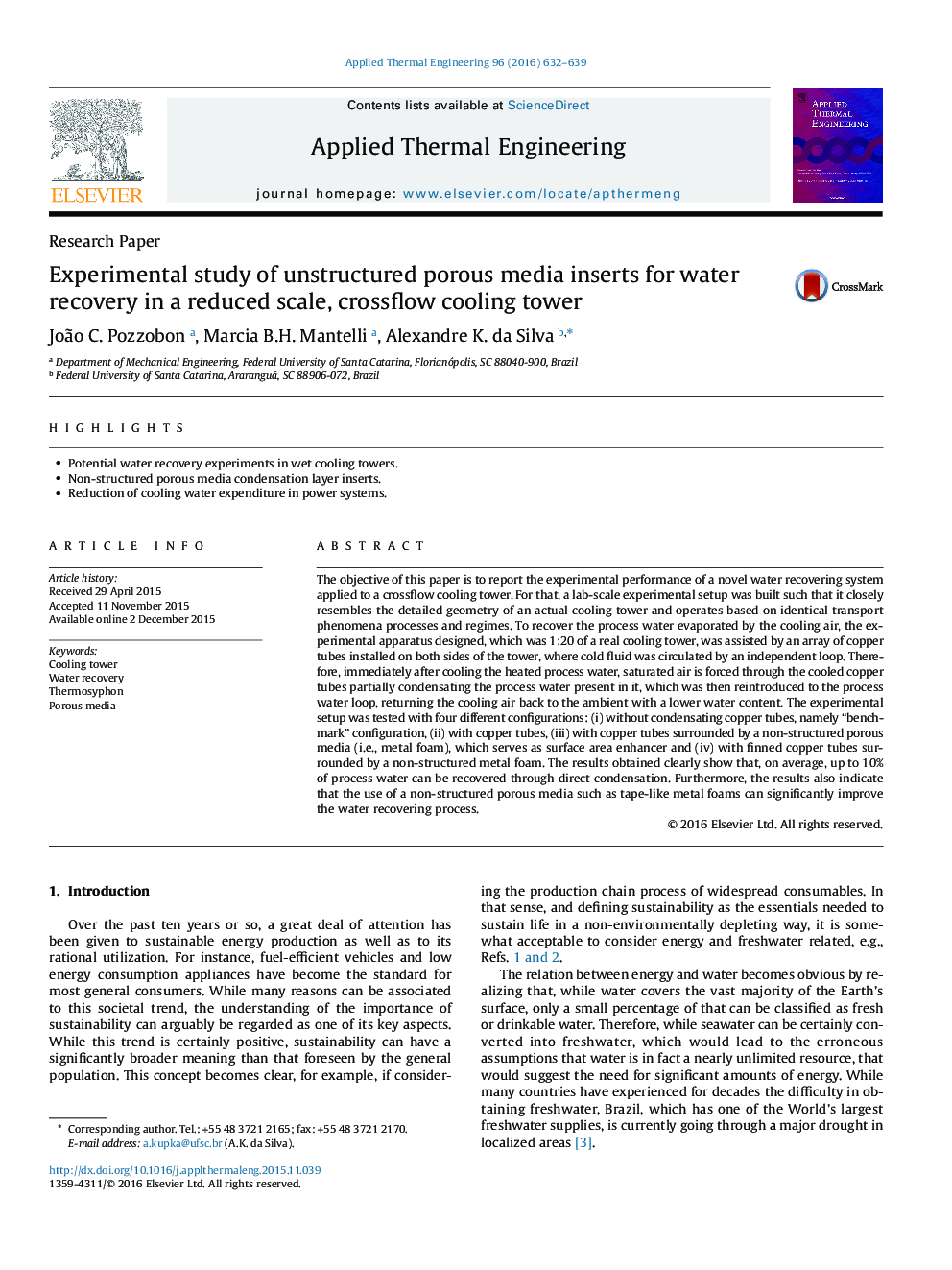| Article ID | Journal | Published Year | Pages | File Type |
|---|---|---|---|---|
| 645006 | Applied Thermal Engineering | 2016 | 8 Pages |
•Potential water recovery experiments in wet cooling towers.•Non-structured porous media condensation layer inserts.•Reduction of cooling water expenditure in power systems.
The objective of this paper is to report the experimental performance of a novel water recovering system applied to a crossflow cooling tower. For that, a lab-scale experimental setup was built such that it closely resembles the detailed geometry of an actual cooling tower and operates based on identical transport phenomena processes and regimes. To recover the process water evaporated by the cooling air, the experimental apparatus designed, which was 1:20 of a real cooling tower, was assisted by an array of copper tubes installed on both sides of the tower, where cold fluid was circulated by an independent loop. Therefore, immediately after cooling the heated process water, saturated air is forced through the cooled copper tubes partially condensating the process water present in it, which was then reintroduced to the process water loop, returning the cooling air back to the ambient with a lower water content. The experimental setup was tested with four different configurations: (i) without condensating copper tubes, namely “benchmark” configuration, (ii) with copper tubes, (iii) with copper tubes surrounded by a non-structured porous media (i.e., metal foam), which serves as surface area enhancer and (iv) with finned copper tubes surrounded by a non-structured metal foam. The results obtained clearly show that, on average, up to 10% of process water can be recovered through direct condensation. Furthermore, the results also indicate that the use of a non-structured porous media such as tape-like metal foams can significantly improve the water recovering process.
